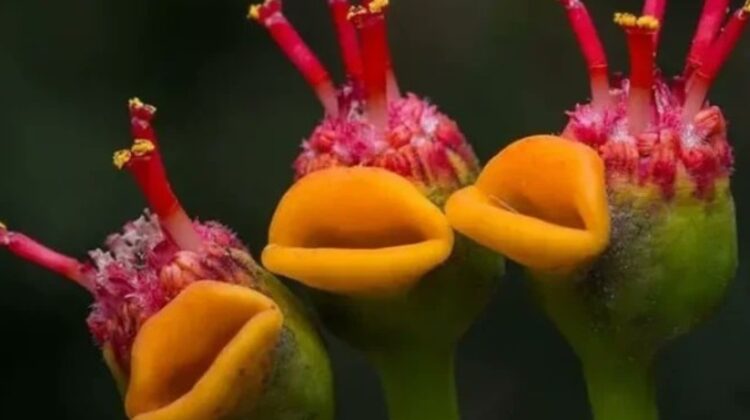
Poinsettias (Euphorbia pulcherrima) are a popular flowering plant, especially during the winter holidays, known for their striking red and green foliage. However, many people are surprised to learn that poinsettia flowers are not actually flowers in the traditional sense. Rather, they are curious-looking structures called cyathia that consist of a single female flower and many male flowers, along with yellow bulbous glands that vaguely resemble mouths.
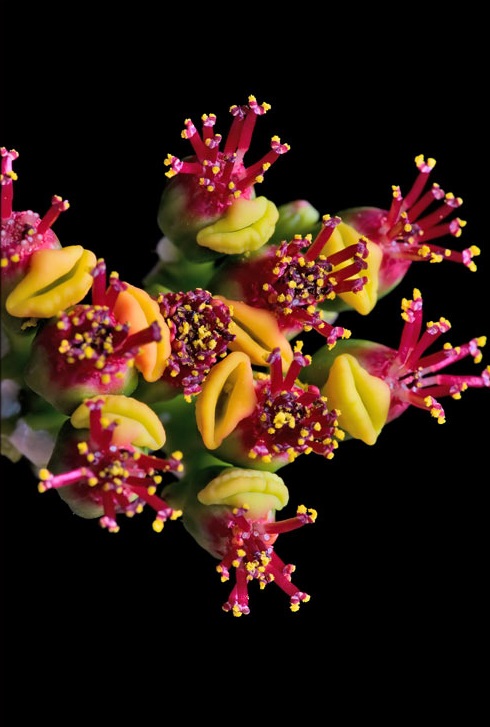
Cyathia are unique to the Euphorbia family of plants, which includes the poinsettia, as well as many other species of succulent and cactus-like plants. Unlike traditional flowers, cyathia lack petals and sepals. Instead, they have a cup-shaped structure, called an involucre, that surrounds the reproductive parts of the flower.
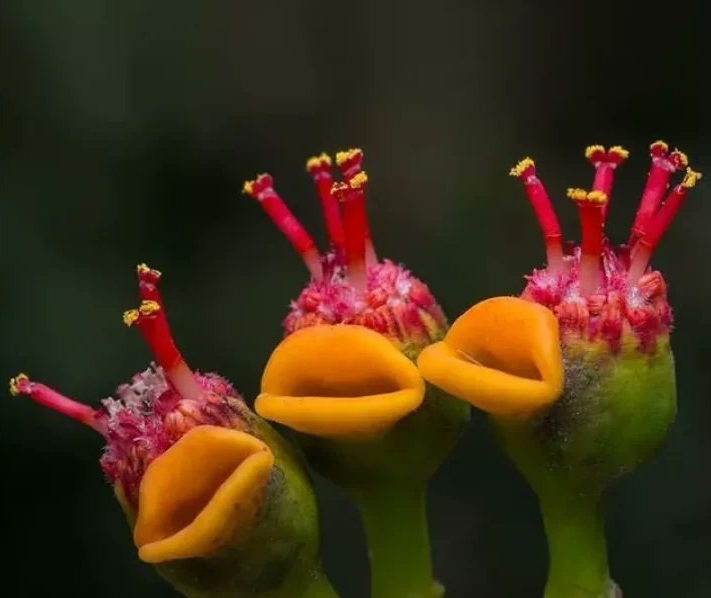
In the case of poinsettias, the involucre is bright red and has several yellow glands located around the rim. These glands secrete a sweet nectar that attracts pollinators, such as bees and wasps. The male flowers, which are located on small stalks inside the involucre, produce pollen that is dispersed by the visiting insects. The female flower, located at the center of the involucre, has a long, curved style that extends upward, above the male flowers, in order to receive pollen.
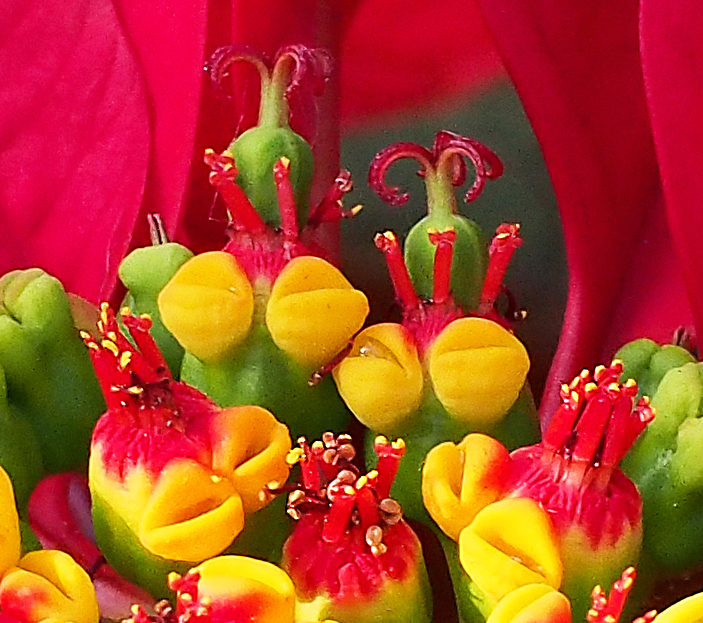
Interestingly, the colorful red “petals” that we associate with poinsettias are not actually petals at all. They are modified leaves, called bracts, that surround the cyathia. The bracts are usually red, but can also be white, pink, or variegated, depending on the cultivar.
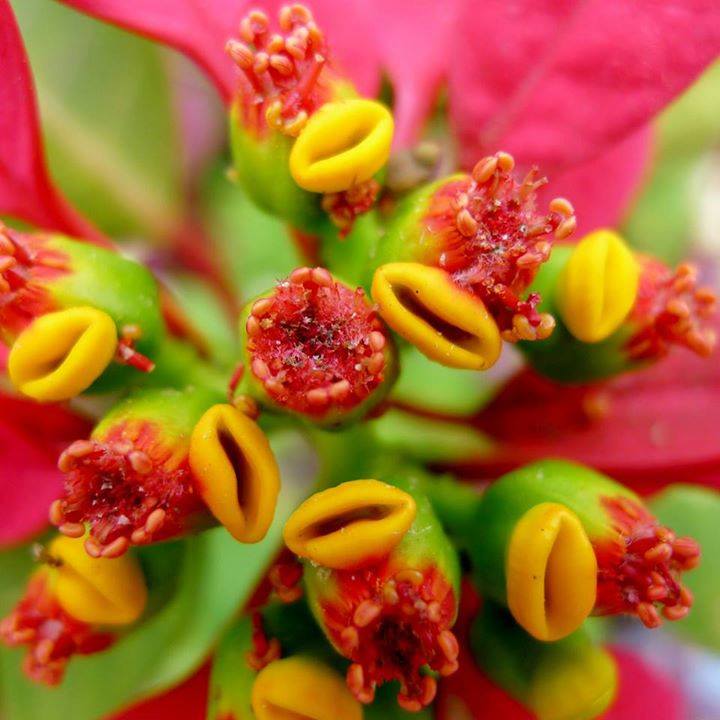
Despite their unique reproductive structures, poinsettias are still able to produce viable seeds. However, because they are often grown as ornamental plants, they are typically propagated vegetatively, through stem cuttings or tissue culture.

In conclusion, poinsettias are fascinating plants that have curious-looking reproductive structures called cyathia, which consist of a single female flower and many male flowers, along with yellow bulbous glands that resemble mouths. While poinsettias are not true flowers, they are still able to attract pollinators and produce viable seeds. So, the next time you see a poinsettia, take a closer look at its unusual floral structures and appreciate the beauty of this unique plant.

Leave a Reply